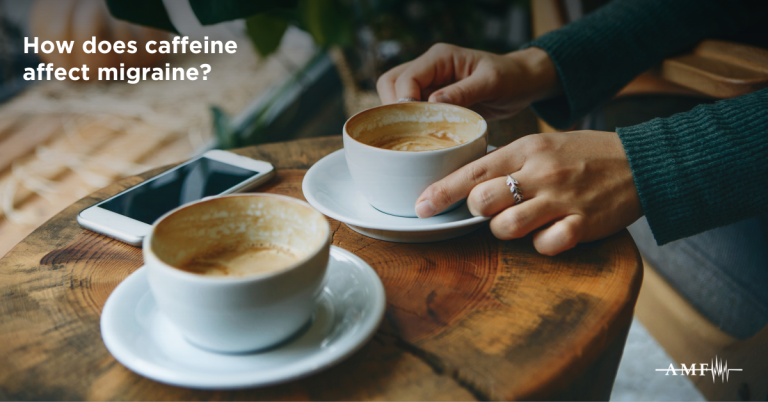Looking for ways to help prevent migraine attacks? Learn all about preventive medications for migraine and how to create a preventive treatment strategy with your headache specialist.
From the pain of a sudden attack to the disruption of plans, migraine can really throw a wrench in the works. While there is no cure for migraine, management and prevention are your best friends. When migraine attacks increase in frequency or severity to the point that they disrupt your ability to work or participate in your usual activities, it could be time to consider a preventive migraine strategy.
What is migraine prevention?
Instead of treating migraine attacks once they begin, preventive migraine medications and strategies work to reduce the frequency, severity, and duration of migraine attacks. They can also help your acute treatments work more effectively.
Migraine prevention may include a combination of:
- Prescription and non-prescription medications
- Natural supplements, vitamins or minerals
- Lifestyle changes
It often takes trial and error, plus consideration of any other medical conditions, to figure out what is best for your specific situation. Though it may feel frustrating to use a trial and error method to find the right preventive migraine plan for you, keep in mind that not all people living with migraine are the same.
Ideally, a preventive migraine strategy should involve a conversation between you and your caregiver. Work with your provider to find the right strategy for you based on your migraine symptoms, any other health conditions you have and medications you’ve already tried, plus any side effects you’ve experienced.
What are the benefits of migraine prevention?
While an essential part of any treatment plan, acute migraine treatments can lead to medication overuse headache (previously known as rebound headache) if used too frequently. A preventive strategy focuses on preventing migraine; reducing the frequency, severity or intensity of attacks; and improving responsiveness to acute medications when needed.
Preventive migraine treatments can also be used to help with other health issues, such as high blood pressure, depression, trouble sleeping and more. Other benefits of a successful migraine prevention plan include reducing the level of disability, reducing excessive use of acute treatments and maintaining lower cost of care for migraine management.
Types of Preventive Migraine Medications and Treatment
Lifestyle changes are one way to prevent migraine or reduce the frequency or severity of attacks. The SEEDS model explained in this blog is a simple mnemonic device that can help you remember to practice self-care basics that can help ward off or reduce the frequency of migraine attacks.
When it comes to other migraine treatment methods, there are many different types:
- High blood pressure medications
- Anti-seizure medications (anticonvulsants)
- Anti-calcitonin gene-related peptides (CGRP)
- Antidepressants
- Natural supplements
- Neuromodulation devices
- Neurotoxins
Some medicines used to help prevent migraine originally had different intended purposes. These include medications used to treat high blood pressure, seizures and anxiety/depression—all of which have been tested and proven beneficial in migraine clinical trials. Often the doses used for migraine are very small compared to the original intended purpose.
Combining and Fine-Tuning Preventive Medications to Manage Migraine
Along with the various types of medications available, there are several different approaches to fine tuning your preventive migraine plan. For example, using just one medication, gradually adjusted to the ideal dose, is called monotherapy. Another approach is using two or more drugs in combination—commonly from multiple different classes of medication—in less than maximum doses. This is called polytherapy, and it allows doctors to prescribe medications that complement each other while also reducing unwanted side effects.
When using more than one medication at a time, your doctor will need to make sure they won’t interact negatively with one another. Our FAQ on migraine drug interactions explains more about common migraine medication interactions you should know about.
It may take two to three months before you notice a decrease in the frequency or severity of attacks even after reaching “the beneficial dose.” You may require treatment for six to twelve months or longer, but it’s important to stay optimistic, monitor your migraine attacks and stick with the prescribed course of treatment.
Another thing to consider when working with your provider to create a preventive migraine strategy is to recognize that you may have more than one medical concern that can be treated simultaneously. For example, if you have depression and migraine, it may make sense to try an antidepressant that has been shown to be effective for preventing migraine as well. If you have high blood pressure and migraine, then one of the drugs used for hypertension and migraine may be a better fit for you.
Commonly Used Preventive Migraine Treatments
Below, we review a list of commonly used preventive medications and their corresponding medication classes. Use this list to see which class of medications may make the most sense for you while being aware of possible side effects. Below the table you’ll find a more comprehensive explanation of each medication category.
| Type of Medication | Medication Class | Generic Name | Side Effects |
| Anti-CGRP monoclonal antibodies | CGRP inhibitors | Erenumab | Injection site pain and swelling
Constipation Increased blood pressure |
| Gepants | CGRP inhibitors | Atogepant
Rimegepant |
Nausea
Dry mouth Dysgeusia (bad taste in the mouth) Constipation Fatigue |
| Blood pressure medications | Beta-blockers | Atenolol
Metoprolol Nadolol Propranolol Timolol |
Low blood pressure
Low heart rate Fatigue Decreased exercise tolerance Shortness of breath Depression Nausea Insomnia Dizziness Sexual dysfunction (men) |
| ACE inhibitors
Angiotensin receptor blocker |
Lisinopril
Candesartan
|
Weight gain
Constipation Dizziness Low blood pressure |
|
| Antidepressants | Tricyclic antidepressants | Amitriptyline
Nortriptyline Imipramine |
Weight gain
Dry mouth Sedation |
| Selective Serotonin/Norepinephrine Reuptake Inhibitors (SNRI) | Duloxetine
Venlafaxine |
Weight gain or loss
Decreased libido Vivid dreams |
|
| Anti-seizure medications | Divalproex sodium
Topiramate |
Weight gain or loss
Sedation Skin rash Memory disturbances |
|
| Vitamins, minerals and supplements | Magnesium salts | Magnesium oxide, magnesium diglycinate, magnesium chloride slow release | Diarrhea |
| Vitamins | Riboflavin (Vitamin B2)
CoQ10 |
Urine discoloration | |
| Herbals | Mig-99 (Feverfew) | Burping
GI distress |
|
| Neuromodulation devices | Transcutaneous Supraorbital Neurostimulator
Transcutaneous vagus nerve stimulation Non-invasive multi-channel brain neuromodulation system Remote electrical neuromodulation (REN) Single pulse transcranial magnetic stimulation (sTMS) |
Skin irritation
Transient tingling Numbness Drooping of the lips (vagus nerve stimulation) |
|
| Neurotoxins | OnabotulinumtoxinA (FDA approved for chronic migraine only) | Neck pain
Neck stiffness Cosmetic changes Droopy eyelid Flu-like symptoms (rare) |
Learn More About Each Class of Migraine Prevention Treatment
Anti-Calcitonin Gene-Related Peptide (CGRP) Therapies
Anti-CGRP therapies are injections designed specifically for treating and preventing migraine. This article answers common questions about anti-CGRP therapies, which are designed to target CGRP, a protein involved in generating the head pain associated with migraine.
Gepants are also preventive treatments in oral pill or dissolvable tablet form and differ from the injectable CGRP monoclonal antibodies.
Anti-CGRP therapies work by blocking CGRP from attaching to its receptor or the ligand (CGRP peptide), thereby blocking the pain signal. In comparison with traditional medications, anti-CGRPs typically have fewer side effects.
Blood Pressure Medications
These are old standbys in migraine prevention. Evidence favors the beta-blockers metoprolol, propranolol and timolol, followed by atenolol and nadolol. Propranolol and timolol have U.S. Food and Drug Administration (FDA) approval for migraine prevention; the others do not. Side effects include low blood pressure, low heart rate, fatigue, depression, nausea, insomnia and dizziness.
Anti-Seizure Medications
This group of medications can be equally as effective as beta blockers. Divalproex sodium and sodium valproate is a long-standing and effective preventive agent. Generally, it is well tolerated too, but can be associated with weight gain and polycystic ovaries, and should be avoided by those with liver disease. Topiramate is another effective preventive medication. While it can result in tingling, word finding problems and memory issues, it can also cause appetite suppression. Both valproate and topiramate are FDA-approved for migraine prevention. Neither should be used in women who are not using birth control, as they can cause birth defects. Other commonly used anti-seizure medications for prevention, such as gabapentin and lamotrigine, are not FDA approved.
Antidepressant Medications
Amitriptyline is an old, inexpensive medication that effectively prevents episodic migraine. While it can help with sleep and mood, it can result in weight gain, sedation and dry mouth. A newer antidepressant that made it to the preventive list is venlafaxine, which helps with mood and does not result in weight gain. You can take these in the morning and it can be energizing, so it does not help people fall asleep. Selective serotonin reuptake inhibitors, such as fluoxetine (Prozac), sertraline (Zoloft) and paroxetine (Paxil) work well for depression and anxiety, but lack strong evidence supporting effectiveness as migraine preventives.
Nutritional Supplements, Vitamins and Minerals
The supplement group is usually well tolerated by most people, although the effectiveness may not match stronger prescription counterparts. Riboflavin, magnesium and MIG-99 (feverfew) are probably effective, and CoQ10 is possibly effective. Learn more about nutraceuticals here.
Neuromodulation Devices
Neuromodulation devices use electrical currents or magnets to adjust or change activity that occurs in the brain. Some of these devices can stop migraine attacks that are already underway, while others have preventative uses. Some devices are cleared for both acute and preventive treatment. A few are even cleared for use in adolescents. Learn more about the four FDA-approved neuromodulation devices on the market.
Neurotoxins
OnabotulinumtoxinA, also known as Botox®, is a form of botulinum toxin, a neurotoxin. A neurotoxin is a poison that acts on the nervous system. When purified and used in small doses, OnabotulinumtoxinA temporarily prevents muscle contractions in the muscle you inject it in. Even though the injection goes into the muscle, it is believed that onabotulinumtoxinA blocks pain signals in nerves in the head, neck and shoulders. Its effect lasts up to 3 months. In October 2010, the FDA approved OnabotulinumtoxinA injection therapy for the preventive treatment of chronic migraine, which is defined as 15 or more headache days per month. This article talks more in length about Botox injections used for chronic migraine.
The American Migraine Foundation is committed to improving the lives of those living with this debilitating disease. For more of the latest news and information on migraine, visit the AMF Resource Library. For help finding a healthcare provider, check out our Find a Doctor tool. Together, we are as relentless as migraine.









































































